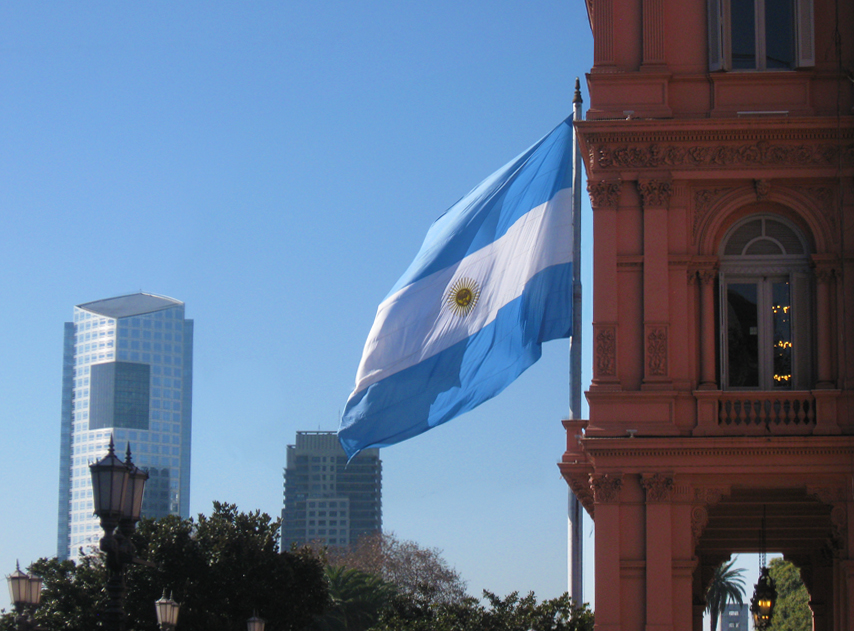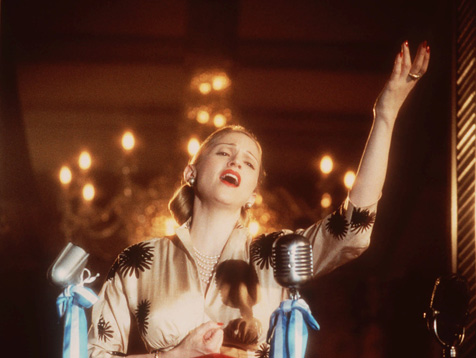Evita's Buenos Aires

"What's new, Buenos Aires? I'm new, I wanna say I'm just a little stuck on you. You'll be on me too."
Walking down Avenida 9 de Julio my first morning in Buenos Aires, it was all I could do to keep from bursting out in song.
The movie 'Evita' came out when I was in high school. I saw it in the theater with my mother (who had seen the musical on Broadway and in London) and my best friend. Even as a teen, I was aware of the drama/hype around Madonna being cast as the infamous former first lady. Despite the music not really being in her usual range, I thought the pop singer did an amazing job - that moment during "Don't Cry for Me, Argentina," when they flash back to Evita waving to the gauchos from the window of the train is one of the most memorable things I've ever seen on the big screen. My best friend immediately bought the soundtrack, and we would listen to it on her Walkman every morning on our bus ride. Our Spanish teacher had told our class that he had known a lady who used to freshen up Evita's hair or makeup while her body was in exile in Europe, adding an additional layer of mystique to her legend.

Humming under my breath as I traversed the "Big Apple", I wondered how the people of the city really felt about both (the Englishman) Andrew Lloyd Webber's musical, and the woman who had inspired it. The musical portrays Eva Duarte Peron as a woman who lived and fought for the lower-class worker - the descamisado - while also questioning how much of her work was done to bolster her own image, and how much help she truly provided during her short life. Many scenes in the epic musical feature protests - protests that led to her husband's rise to power, and later protests that weakened it. Within ten minutes of wandering the city center, I encountered a protest. Evita's giant image watched over it from the side of the Health Ministry. I saw several more protests over the next few days, some for current issues and some seeking redress for horrors committed by the various dictators and juntas that followed in the wake of Peron.
I visited the Evita Museum on a rainy, rainy day. The building is a beautiful old apartment in a tony part of town. Eva Peron had instructed the government to buy the property to serve as a home for single mothers. Now it is a shrine to her legacy. The museum is beautifully curated - you begin in a dark, mirrored room with sultry tango music playing in the background. Evita's death mask is the lone object in the gallery.
The next few rooms serve as an introduction to her early life - and here is where the movie musical and reality diverge. Evita's father seems to have been more involved with his family than the movie portrays. Her mother accompanied her to the capital when she went to seek her fortunes as an actress, a different story than the movie as well. The museum and the movie seem to come together once Eva meets Juan Peron. In the museum, the moment is effectively presented as a flight of stairs, with a quote along the wall reading, "My life only really began on the day when it met with the life of Peron."
The upper floor of the museum has a great collection (Evita's gorgeous clothes, a letter she wrote to Peron while he was imprisoned, items from her various charities and welfares), but that weekend I headed for the Casa Rosada, to take a free tour of Argentina's presidential mansion.
It was a long, cold wait (1 hour for a 45 minute tour) but it was fun to see the various facets of the building and to discover that the country still treats Eva Peron as a saint. Her office in the presidential palace is preserved along with various portraits and other remembrances from her time there. The tour left me curious about the way countries present their buildings of government - despite living near Washington D.C. for the majority of my life, I have never visited the White House.

I also had my own movie musical moment, as the tour leads you through the famous balcony from which Evita delivers her speech (as the song, "Don't Cry For Me, Argentina"). Argentine and foreign tourists alike waved from the balcony to an imaginary crowd below.
I had one final place to visit - Evita's tomb at Recoleta Cemetery. Compared with many of the other mausoleums, the Duarte family crypt is quite plain. The only hint that someone important is buried there are the various plaques and offerings of flowers left by visitors. But despite the austerity of the shrine, it is clear that Evita still lives on in the hearts of her countrymen, over 60 years after her death. The musical serves as a great primer to her complicated life, but her legend far exceeds it, especially in her beloved B.A.
Comments
Post a Comment